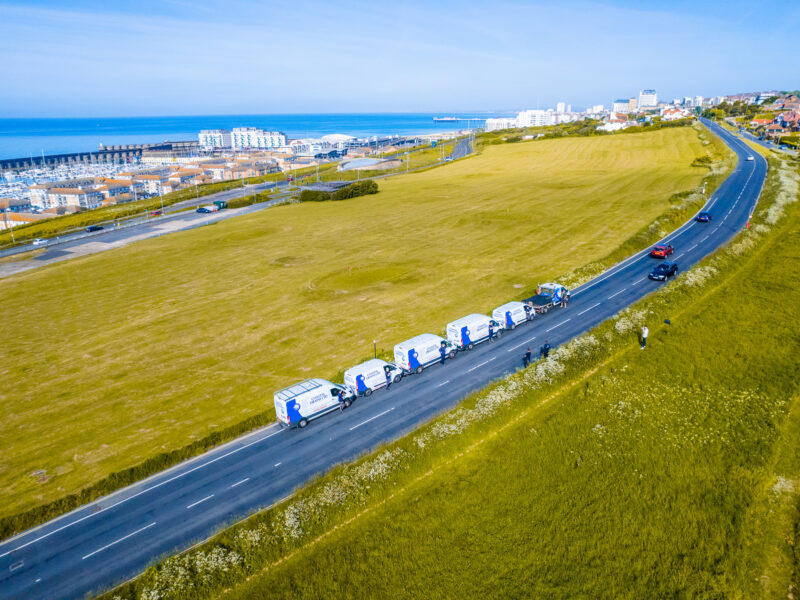Lead Pipes
Do You Have Lead Pipes in Your Home? Water mains in the UK are not…
Read more24 hr Emergency Callout

Blog
Here at Coastal Drains we are passionate about all things coastal and, dare we say it, we are passionate about drains too! As a company, we value new eco-friendly innovations and services that are keen to improve the environment. Over the last few decades, our country has taken some big steps to improve the quality of our water and the health of our coastlines. This is thanks to the work of water companies, the Environment Agency, local communities, farmers, environmental organisations and local councils to name but a few. The standard of our bathing waters along the coast has been continually improving since 1990 and in 2015 a total of 97% of England’s bathing waters passed the minimum tougher standard and have continued to improve.
We should all be extremely motivated to continue this positive trend towards healthier coastlines. Which is why The Ocean Cleanup team caught our attention when they launched research into one of the biggest ocean clean up feats in history.
The Ocean Cleanup innovation was initially conceived by Boyan Slat, a young boy of seventeen, during a science project one year. Slat struggled at first to gain any funding or interest in his project, which many institutions disregarded as impossible. However, on 26th March 2013 things changed when The Marketing Heaven shared his TEDx video on social media, providing numerous views that contributed to its visibility. His story went viral and we all know that when things go viral it’s pretty much impossible to stop the flood of attention and interest that comes your way. This was certainly the case for Boyan Slat who received more emails and enquiries in one day than he could possible read, let alone reply to. His idea had taken off! A crowdfunding page was launched and enough money was raised to assemble a like-minded team of people, including 100 volunteers.
After a lot of research and attempting to design and engineer the world’s first ever floating technology that would rid the ocean of plastic, Slat and his team had created their first floating system prototype. One and a half metres above water and the same again below, the system is a very large one. The reason for this is that it allows the team to catch both large and small pieces of prototype. The system was also fitted with motion sensors (four throughout the whole system to measure the force), and camera systems to monitor the whole prototype from mission control 24/7.
Not only were initial designs complicating but there was the added challenge of location where the system would be installed, in the middle of the ocean, an environment that was prone to storms and often unpredictable in its severity and power. To conquer this, Slat’s team created the ‘ultimate design’ condition by preparing for the kind of extreme storms their barrier is bound to experience out in the vast expanse of the ocean during its ten-year deployment. Therefore, they followed guidelines for a storm where current, wind and waves all reach extreme magnitude at the same time. A storm this strong can be expected to occur only once every 100 years. Consequently, a storm with such violent conditions cannot be easily tested and therefore, a simulated test was created on a computer model.
In short, the team were designing for four cases:
1. Maximization of plastic production under normal conditions
2. Withstanding extreme storms
3. Withstanding extreme storms even in the event of failure
4. Withstanding cyclic loads.
The system is one of the strongest floating barriers ever designed and can survive over 95% of weather conditions. It is so strong in fact that the team claim, even if a shark were to bite on it the system would survive. Not only can it survive shark bites but because it is made from ten different layers of material, it can survive up to 80 tons of weight. Ideal for those stormy nights out on the ocean with giant tumbling waves and extremely high winds.
Slat and his team deployed their first pilot system in 2016, and hope to be able to start cleaning the North Pacific by 2020. If Slat and his team are successful, they will be initiating the largest ocean clean-up in history. Slat’s phenomenal invention has the potential to rid the oceans of plastic, saving whole species of marine life as well as changing the quality of the world’s oceans forever.
Follow their story online at www.theoceancleanup.com to keep up to date with their progress and to read their full story. Here at Coastal Drains we are fascinated by this invention and extremely keen to see it succeed! I can speak for all of us at Coastal Drains when I say that we will be watching this company with interest and rooting for their success!